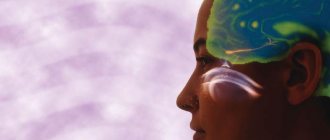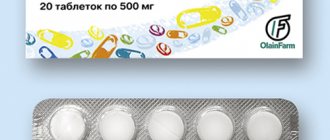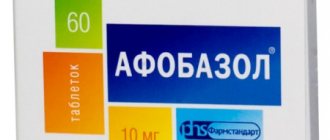Principle of medication coding
Once in the liver, ethanol molecules react with an enzyme such as alcohol dehydrogenase. It is produced in the organ as a response to alcoholic substances. Ultimately, alcohol breaks down into acetic acid, which is safe for the body, and acetaldehyde, a toxic organic compound.
The main component of all coding drugs is disulfiram. This chemical interacts with the processes of removing alcohol from the body, blocking the breakdown of acetaldehyde.
Before coding, the patient must be explained all the serious consequences of non-therapy, since combining a large dose of alcohol and disulfiram is deadly. It is important to remember that responsibility for failures does not lie with doctors. If the patient agrees to the conditions, he will be asked to sign the accompanying series of documents and treatment can begin.
Where is the “torpedo”?
The names “Colme” and “Esperal” (like all the others from our infographics) are little familiar to alcoholics.
They know one main drug - “Torpedo”. To sew in a “torpedo” means to be coded. Drug treatment clinics speak to clients in their own language. “Coding with a torpedo or sewing in a torpedo is a time-tested drug with positive treatment experience,” says the website of one of the drug treatment clinics. It’s a paradox, but such a drug does not exist in the world. There is a genius marketing move.
“Somewhere in the 80s they began to implant drugs for the treatment of alcoholics,” said narcologist Oleg Stetsenko. “They were explained that if they drink after that, their heart will stop and they will die. Everything was very problematic: the drug did not “take root”, there was pus at the site of “stitching in”, there were many contraindications.
This spoiled the reputation of doctors, clinics, and the drug.
“Then they began to tell alcoholics that they were no longer offering Esperal, but a completely new drug from America called Torpedo,” continues Oleg Stetsenko. - But these were all words, in fact there was no “Torpedo”, they continued to sew into alcoholics the same thing as before.
And for some reason, it was this fictitious name that stuck and became part of alcoholic folklore. The tablet can be sewn into place (in Russia it is usually sewn into the buttock, in Japan they used to be sewn into the lip). You can simply prescribe a course of pills to the patient - he will swallow them.
Your Narcologist recommends: Benefits of coding
The active effect of disulfiram is to prevent the breakdown of acetaldehyde, which results in severe toxic poisoning. Coding prevents the accumulation of toxins, saving a person from the painful consequences of alcohol addiction:
- blood pressure surges;
- dizziness and headache;
- nausea and vomiting;
- heartbeat disturbance;
- fever;
- tremor (trembling of limbs);
- mood swings;
- nervousness and irritability;
- in severe cases: convulsions, delirium tremens (delirium tremens).
What happens if you drink after coding?
In addition to its high efficiency, drug coding has many disadvantages. If a person breaks down and starts drinking soon after the procedure, he will face many complications and unpleasant side effects.
Least dangerous consequences:
- headache;
- attacks of suffocation;
- feeling of nausea, vomiting;
- increase or decrease in pressure;
- the appearance of red spots on the skin;
- general weakness;
- minor cramps.
In some cases, the following complications are possible:
- acute psychosis, hallucinations, delusions;
- myocardial infarction, severe arrhythmias;
- convulsive syndrome;
- various allergic reactions;
- severe liver damage up to hepatic coma;
- renal failure or toxic damage to other organs.
Such effects will only occur if the encoding has not expired. If the medicine is completely eliminated from the body, nothing like this will happen. The person will feel great and will be able to continue drinking. Naturally, he will return to his previous lifestyle.
What happens if you drink kvass or non-alcoholic beer?
As you know, kvass is a product of lactic fermentation of malt and flour, so it contains a small amount of ethyl alcohol. Different kvass can contain from 0.5 to 2% ethanol. Naturally, drinking this drink will provoke a disulfiram-ethanol reaction. Therefore, drinking kvass after coding is extremely undesirable - even a small amount of this drink can seriously harm a person.
Like kvass, non-alcoholic beer is prepared by fermentation. The drink is then purified from ethanol using various techniques to produce non-alcoholic beer. As a rule, it contains a small amount of ethyl alcohol. If you drink non-alcoholic beer after coding, you can cause a pronounced deterioration in a person’s well-being.
Today, many manufacturers produce low-quality non-alcoholic beer that is not made using the same technology. In essence, this drink is a regular beer-flavored soda (carbon dioxide, dyes, flavorings and aromas are added to it). Naturally, such non-alcoholic beer is harmless when encoded, so you can drink it without fear.
What conditions must be observed when coding?
For the effectiveness and proper implementation of the procedure, the following must be observed:
- The patient must have voluntary consent and a conscious desire to be cured.
- Complete exclusion of any alcoholic beverages at least two days before the procedure. If even the slightest amount of alcohol is present in the body, it will provoke severe poisoning.
- There are no contraindications to taking disulfiram.
If the patient is on a drinking binge, special droppers will help bring him out. This technique is the most popular. It makes it possible to relieve withdrawal symptoms, eliminating the desire to drink alcohol again. It is with the help of a dropper that the body is cleansed before the coding procedure is carried out.
Opioid receptor blockers
The progress that has been made in the study of the neurochemical mechanisms of alcohol dependence has made it possible to propose several drugs for its treatment. For example, it has been determined that the brain contains an endogenous opioid system where morphine-like compounds (endorphins and enkephalins) are produced that produce analgesic effects and euphoria.
Medicines that are opioid antagonists block opioid receptors and prevent the pleasurable effects of drug use. Although alcohol is not an opioid receptor antagonist, many of its effects are produced through the endogenous opioid system.
Opioid receptor antagonists have been experimentally shown to block the rewarding effects of alcohol. For example, thanks to Naltrexone, the increase in dopamine levels after alcoholic drinks is prevented, and this effect was dose-dependent. Dopamine is known to be involved in the reinforcing properties of alcohol. The duration of remission in patients who took Naltrexone as maintenance therapy was longer than in those who took placebo.
It must be borne in mind that the drug is also effective as an anti-relapse agent if taken regularly for twelve weeks. Naltrexone is especially recommended for patients with uncontrollable, strong cravings for alcohol (compulsive addiction). At the same time, treatment with the drug implies increased motivation. The effectiveness of therapy is significantly enhanced when combined with supportive psychotherapy.
The drug "Nalmefene" is similar in structure to "Naltrexone". It differs from the latter in that it does not have hepatotoxicity. Among other things, Nalmefene is a universal opioid receptor antagonist that blocks three types of them.
Kinds
There are several types of coding injections that are administered to different parts of the body.
into a vein
Narcologists have disagreements regarding intravenous coding. Some praise it for its effectiveness, others call it quite dangerous for the body. Such injection has a strong effect on the patient’s brain activity, provoking the risk of psychoneurological disorders.
The duration of action of drugs injected into a vein ranges from 1 to 3 years.
Intramuscular
The intramuscular coding method is the safest among injections. With such injections, the lowest rate of side effects has been recorded, and moreover, they can be performed at home.
Subcutaneous
The essence of this method is as follows: a special preparation in the form of a gel is injected under the patient’s skin in the area of the shoulder blades. After a couple of days, the substance crystallizes and gradually dissolves.
To the liver
In such a situation, the injection is administered directly into the liver. The principle of operation, compared to other methods, is slightly different. The drug administered to the patient blocks the body's production of enzymes responsible for the breakdown of ethyl alcohol. As a result, a reaction identical to alcohol intoxication occurs (nausea, vomiting, etc.).
Under the shoulder blade
Injections under the shoulder blade are no less effective. The procedure is quite painful and is of little demand among patients. But the advantage of this method is that the injected drug is absorbed very slowly, providing a long-lasting coding effect.
Not doctors, but “hangmetologists”
This is one of the reasons why sales of coding drugs are declining. Conscientious doctors are increasingly refusing them.
For example, coding has been banned in the capital’s drug dispensaries since 2020.
“Prohibit the use of... methods of treating drug addiction patients that are not included in the Standards for the provision of primary health care and drug treatment, including various types of object-mediated instillation of a ban on the use of alcohol or other psychoactive substances (coding, SIT, “Torpedo”, drug implantation ESPERAL, the 25th frame method, coding using the Dovzhenko method and its variations, etc.),” says the order signed by Evgeny Bryun (he is also the director of the Moscow Scientific and Practical Center for Narcology).
But dispensaries in other regions, as follows from the data on the government procurement portal, continue to purchase drugs with disulfiram.
“Since drugs containing disulfiram have many side effects, narcologists have now begun to look for alternative treatment options,” says Ruslan Isaev, president of the Independent Narcological Guild.
This includes rehabilitation programs, where doctors work more with the patient’s psychology.
Nowadays it's mostly charlatans who code.
— No drug stays in the body for years! - explained Evgeny Brun. —The same disulfiram can act for a maximum of a month. If they say that it works for years, this is deception and banal profit-making.
At the same time, charlatans often do not tell patients and their relatives what exactly they are working on. To avoid complaints due to side effects, “dohmetologists” often inject patients with nicotinic acid. If the alcoholic is an experienced alcoholic and has already been injected with a “torpedo”, then when nicotinic acid is administered he will feel the same effects - nausea, redness of the skin, increased blood pressure. Then the “hangover specialist” says that now every glass could be his client’s last, and leaves with a “clear” conscience and pure profit.
What drugs are used and how do they work?
The modern pharmaceutical market is quite large and offers drug addiction specialists and their patients affordable and effective drugs for coding against alcoholism.
Aquilong
When administering this drug, the patient is given a small dose of alcohol. As a result, he feels all the unpleasant consequences of drinking alcohol during the coding period. Nausea and severe dizziness form a negative attitude towards drinking.
Atrovid
The product causes a strong reaction in the body from contact with ethanol. Nausea, vomiting, headache, pressure surges and fever appear.
Algominal
Today, Aglomilal is one of the most powerful drugs for combating alcoholism. It maximally suppresses the craving for alcohol at any degree of dependence.
Actoplex
An American drug of a new generation, designed to remove a person from a state of chronic intoxication. Actoplex lasts for about a year, blocking the work of substances that form dependence on alcohol.
Vivitrol
Vivitrol is the most modern and little-studied drug for intramuscular injection. It does not cause severe consequences after drinking since its active substance is not disulfiram, but naltrexone. It blocks the functioning of certain receptors in the brain, suppressing the feeling of pleasure from drinking alcohol.
Binastim
Like many other coding drugs, Binastim contains disulfiram. The drug not only suppresses liver cells responsible for the breakdown of ethanol, but also helps strengthen the immune system, improves the functioning of internal organs, and stimulates the functioning of the central nervous system and brain.
Colma
The product is available in the form of colorless drops that are added to food and soft drinks. They cause aversion to drinking due to the unpleasant consequences of combination with alcohol.
Regard
A European analogue of the drug Actoplex, with the most pronounced effect of aversion to alcoholic beverages.
Naltrexone
Once in the body, Naltrexone blocks the receptors responsible for the feeling of pleasure from alcohol. As a result, the patient begins to feel the pointlessness of drinking alcoholic beverages.
StopEthyl
Disulfiram-based drops for adding to food and soft drinks. This product is powerful and toxic, so it can only be used for a short period.
Tetlong-250
Crystallizing gel intended for subcutaneous injection with anesthesia. Before you start taking it, you should consult your doctor, as the drug has a wide range of contraindications.
Ferronite
A drug to achieve long-term alcohol remission. Ferronite is effective for 18 months, after which residual alcohol intolerance is present for another 2-3 months.
Esperal
When combined with alcohol, this remedy causes a severe hangover. Esperal is available both in tablets and in ampoules for intravenous injection.
It is important to understand that using these drugs without the consent of your doctor is absolutely prohibited. Any neglect can lead to serious and irreparable consequences for the body. Therefore, in any case, it is necessary to consult with a specialist and not self-medicate.
Tips and tricks
For coding to work, a person must himself understand the full need for treatment. Treatment of alcoholism under pressure, without the patient’s desire, does not bring results.
Contraindications to coding:
- the presence of acute infectious diseases;
- severe pathologies of the liver and kidneys;
- vascular and heart diseases;
- mental illness;
- pregnancy;
- epilepsy;
- withdrawal syndrome.
When medicinal coding, it is important to remember that even small doses of alcohol can cause serious consequences for the health and life of the patient.
Consequences
If a patient ignores medical prohibitions and starts drinking alcohol even in small quantities, he will face a number of unpleasant consequences:
- Neurological: headaches, bluish skin, numbness, seizures.
- Cardiovascular: arrhythmia, tachycardia, pressure drops, pain in the heart area.
- Mental: anxiety, depression, insomnia, panic attacks.
Disturbances in the functioning of the gastrointestinal tract are also possible: nausea, vomiting, pain in the stomach and intestines, diarrhea.
The first year after coding is the most dangerous time for breakdowns. In severe cases, patients experience heart attacks, strokes and internal bleeding. If the patient has severe concomitant diseases, there is a risk of death.
Naltrexone and its analogues
Naltrexone is intended to reduce and suppress cravings for alcohol or opioids. It binds to receptors in the human brain, blocks the release of endorphins and neutralizes any manifestations of euphoria after drinking.
Medicines based on it are considered safe; the drugs used for coding have virtually no side effects.
Very rarely the following may appear:
- discomfort in the stomach;
- cramps, muscle tension, headaches;
- insomnia, anxiety and dizziness.
Most often used:
- Naltrexone. Coding is carried out by subcutaneously sewing in the implant. The minimum period of sobriety before the procedure is 7 days. As a rule, stitching alone is ineffective. To ensure results, you will need to repeat the procedure after 60 days and a year of sobriety.
- Vivitrol. It is injected intramuscularly into the buttock or thigh. All other routes of administration are strictly prohibited. Frequency of use: 1 time per month.
- Naloxone is most relevant for recovery from an alcoholic coma caused by taking a large dose of alcohol. Sometimes it can also be used for encoding.
If you are undergoing surgery accompanied by opiate anesthesia, then you must decode at least 48 hours before the operation.
Efficiency
According to narcologists, the greatest effect is achieved through an integrated approach to treatment. This involves combining medication coding and regular attendance at psychotherapeutic consultations. With this approach, the patient eliminates not only the physiological, but also the psychological need for alcohol.
In any case, without personal desire, it is almost impossible to recover from alcoholism. But if there is one, conscientious adherence to all medical recommendations will help not only get rid of the addiction, but also restore health undermined by alcoholic beverages.
TORPEDO
The drug for intravenous coding for alcoholism Torpedo (TORPEDO) - has moderately pronounced properties of suppressing the desire (craving) to drink alcohol. Alcohol treatment with Torpedo belongs to the so-called “prohibitive methods” of treating alcoholism and is used primarily to maintain sobriety.
The desire to drink alcohol only with the help of coding cannot be reduced in all patients, that is, the method is not suitable for everyone. It is necessary to find out and try to eliminate the causes of alcoholism. First, you need to get a consultation with a psychiatrist-narcologist so that a specialist can decide on the advisability of such coding during a face-to-face consultation.
Side effects and contraindications
Like any treatment, this method has a number of contraindications. The use of injections for alcoholism is prohibited when:
- nervous disorders;
- pregnancy;
- withdrawal state;
- extensive liver damage;
- cardiovascular pathologies;
- infectious diseases compensation stage;
- organic brain lesions.
Side effects during therapy may be as follows:
- pronounced signs of dyspepsia;
- disorders of the cardiovascular system;
- confusion;
- changes in blood pressure;
- fainting, migraine attacks.
Drugs for coding against alcoholism
The procedures are carried out by specialists in a hospital setting after a preliminary medical examination. The choice of medication depends not on the dose of alcohol, but on the characteristics of the body and the presence of chronic diseases. Therefore, when coding, it is important to start not from the positive reviews of friends, but from the instructions for use and the recommendations of the attending physician. Below is a table explaining which injection is given when coding for alcoholism in a hospital.
| 11111111111111111111111 |
|
| name of the drug | mechanism of action | complications | price, rubles |
| Disulfiram | Disulfiram is injected into a vein, the drug lasts from 1 to 3 years. Disulfiram injections are not used for serious illnesses. | Severe migraine attacks, memory loss, angina pectoris, cerebral edema. | 1100 |
| Algominal | The active component disulfiram produces enzymes in the liver that prevent the breakdown of ethanol. This increases its concentration in the blood. | Pressure changes, angina pectoris, tachycardia, pressure changes, fainting. | 3,000 (for 3 months) |
| Vivitrol | Administered intramuscularly, they help cause acute attacks of intoxication and stool disturbances. Capable of blocking opioid receptors. | Nausea, vomiting, anorexia, abdominal pain, signs of dyspepsia. | 15 000 |
| Dolphison | The injection is performed intramuscularly and causes side effects after drinking a dose of alcohol. | Extensive pathologies of the cardiovascular system and hematopoietic organs. | 3 000 |
| Sit | After the injection, you should not drink alcohol, otherwise the dose of ethanol in the blood will pathologically increase. | Symptoms of intoxication, tachycardia and heart rhythm disturbances. | 8 000 |
| Esperal gel | An intramuscular injection prevents drunkenness due to the activity of active substances. When interacting with ethanol, the medicine blocks nerve endings and causes signs of food poisoning. | Lack of appetite, signs of dyspepsia, internal weakness, stool instability. | 15 000 |
| Mst | Active components increase the toxicity of alcoholic beverages and deliberately poison the body. | Complete intoxication of the body, dehydration. | 10 000 |











